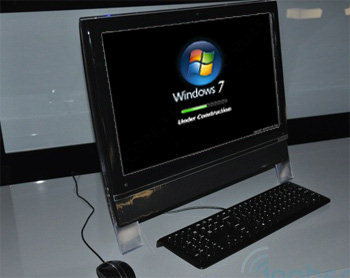The computer helper: Buying a Windows 7 computer
 Washington - Lots of people have waited until the official release of Windows 7 before buying a new computer. And now that the new version of Windows is out, the stampede is on.
Washington - Lots of people have waited until the official release of Windows 7 before buying a new computer. And now that the new version of Windows is out, the stampede is on.
Just about any computer you buy today will have Windows 7 pre- installed, but what type of computer runs Windows 7 the best, and which options should you choose when customising your new machine? Read on for some answers.
Q: I'm going to get a new notebook with Windows 7 pre-installed. Should I opt for a solid state disk? Does Windows 7 take advantage of solid state disks?
A: If you can afford the price premium of a solid state, you will find the expenditure to be a good investment. Solid state disks (SSDs) typically get the best performance ratings from Windows 7, and with good reason: they are far faster at both reading and writing than conventional hard drives.
And yes, Windows 7 can make good use of SSDs. In fact, Windows 7 is the first version of Windows that will note the presence of an SSD and make adjustments to such routines as the disk defragmentation schedule to ensure that SSDs are not worn out with unnecessary defragmentation. SSDs also make features such as sleeping and hibernating more useful, as the computer will require much less time to "wake up" from either state when you have an SSD installed.
Q: How much memory should I have in a Windows 7 computer?
A: Microsoft's official minimum memory requirement for Windows 7 is 1 gigabyte (GB), and you can indeed run the operating system on either a desktop or a notebook equipped with that amount of memory (RAM). But if you do, you'll experience more disk activity than you would if you have more RAM.
The disk activity is a result of Windows 7 swapping out unused portions of code to disk in order to make room for tasks that you require. Disk activity usually translates into poorer performance, especially with traditional hard drives, so most people try to avoid it.
The bottom line is that you should have more than 1 GB of RAM to run Windows 7. If you intend to run the 32-bit edition of Windows 7, you can have up to 4 GB of RAM. With the 64-bit edition, you can have much more. For most, 4 GB is a reasonable amount. But if you're buying a new notebook computer, you'll see models being sold with 3 GB of RAM, which should be sufficient for moderate multitasking with today's office and internet applications.
Q: I want to try the 64-bit edition of Windows 7. Will I need to buy a new computer?
A: That depends upon what kind of processor is currently in your PC. Essentially any Core 2 Duo or Core 2 Quad processor will run the 64-bit edition of Windows 7, as will AMD's line of 64-bit processors.
You can quickly find out whether your PC is 64-bit capable by running GRC's SecurAble processor utility (http://www.grc.com/securable.htm).
You should also be clear, however, about why you're interested in running the 64-bit edition of Windows 7. Today, the primary advantage of a 64-bit operating system is the ability to access more than 4 GB of RAM. If your current PC cannot accept more than 4 GB of memory, then purchasing a new PC that can may be worthwhile if you know you need or want to be able have more than 4 GB of RAM at your disposal.
Note that while most 32-bit Windows applications will run just fine on the 64-bit edition of Windows 7, those 32-bit applications themselves will typically not be able to access more than 2 GB of RAM. So don't expect, say, your version of PhotoShop CS3 or CS4 to suddenly have access to all of the memory installed in your computer simply because you are running the 64-bit edition of Windows 7. You'll need true 64-bit applications for that.
Q: I'm buying a Windows 7 notebook on a budget. Should I spend any extra money I have on a faster processor, more memory, a dedicated graphics card, or a solid state disk drive?
A: Those four upgrades - processor, memory, graphics card, or SSD - are typical of the choices you have today when buying a notebook from a dealer that allows you to configure your own machine.
Given that most of today's processors - with the possible exception of the Intel Atom found in many netbooks - will run Windows 7 more than acceptably for common tasks, a processor upgrade should probably be at the bottom of your priority list. The base amount of memory provided in notebooks today - probably at least 2 GB - is also sufficient for everyday computing.
Graphics cards, however, are almost impossible to upgrade once you purchase your notebook, and Windows 7, like Vista before it, can use all of the graphics muscle you can throw at it. So upgraded graphics are a worthwhile investment for Windows 7.
But there's such a speed difference between traditional magnetic platter hard disks and the newer solid state drives (SSDs) that an upgrade to an SSD will provide you with the biggest performance boost for your money. SSDs are not only faster than traditional hard drives, but they generally consume less power, resulting in better battery life, and they run much cooler and are, of course, silent.
So to recap, you would be wise to prioritise upgrades for a new notebook destined to run Windows 7 this way: an SSD rather than a traditional hard drive, a dedicated graphics card rather than integrated graphics, more memory, and finally a beefier processor. (dpa)